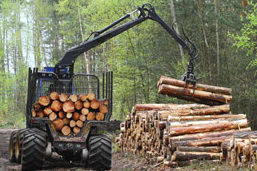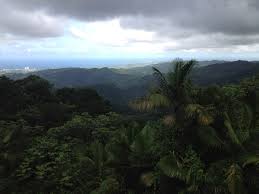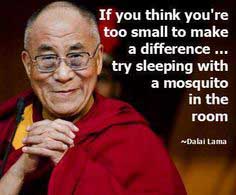
Saving the wild orchids – why location is the most important factor
Preserving native habitat ensures survival of orchids in the wild
Location, location, location. This is the mantra of real estate agents when they tell you how much you can get for your house when you’re selling, or how much you’ll have to pay when you’re buying. Location is always the most important factor, because it determines what resources you can access from your home (schools, culture, etc.). In other words, location tells a great deal about the quality of life for the inhabitant of the house.
When it comes to conservation of orchids and thousands of other plants and animal species, location is also the most important factor. Why is that so?
First, the location has to exist. That’s a pretty simple concept to understand, but not so easy to carry out. The areas where orchids and many other species live are getting fewer and smaller every single day. The more habitat that disappears, the fewer species will be able to survive because they have nowhere to go.
 Second, the location must offer not only a geographical area where species can live, it must also offer the means for them to live. When the size of a rainforest area is drastically reduced due to logging, farming or mining, it cannot retain all the characteristics it originally had. Animals can no longer migrate and breed freely, resulting in a greatly diminished gene pool. Seeds are not naturally scattered widely, reducing the opportunities for the parent plants to reproduce and survive as a species. Pollinators may become unavailable because the area in question is too far removed from other rainforests to make visits by the pollinators feasible. These are just a few examples of what happens when forests disappear. The geographic location is still there, it may be productive for a particular purpose, and it may be profitable for a very small number of people. But the native plant and animal species, and even some human populations, will suffer greatly.
Second, the location must offer not only a geographical area where species can live, it must also offer the means for them to live. When the size of a rainforest area is drastically reduced due to logging, farming or mining, it cannot retain all the characteristics it originally had. Animals can no longer migrate and breed freely, resulting in a greatly diminished gene pool. Seeds are not naturally scattered widely, reducing the opportunities for the parent plants to reproduce and survive as a species. Pollinators may become unavailable because the area in question is too far removed from other rainforests to make visits by the pollinators feasible. These are just a few examples of what happens when forests disappear. The geographic location is still there, it may be productive for a particular purpose, and it may be profitable for a very small number of people. But the native plant and animal species, and even some human populations, will suffer greatly.
Report from International Union for Conservation of Nature
A recent report by the International Union for Conservation of Nature tells us that a full third of the world’s cactus species are endangered. Orchid enthusiasts may not care one bit about those prickly wonders, but this is yet one more example of how interrelated plant and animal species are, and how the loss of habitat has far reaching consequences. The article explains it this way:
Cacti are key components of New World arid ecosystems and are critical to the survival of many animal species. They provide a source of food and water for many species including deer, woodrats, rabbits, coyotes, turkeys, quails, lizards and tortoises, all of which help with cactus seed dispersal in return. Cactus flowers provide nectar to hummingbirds and bats, as well as bees, moths and other insects, which, in turn, pollinate the plants.
Cactus species are widely used by people in the horticultural trade, as well as for food and for medicine. Their fruit and highly nutritious stems are an important food source for rural communities. The nutritional value of one cactus stem of Opuntia ficus-indica – a ‘prickly pear’ cactus popular in Mexico, where it is known as ‘nopal’ – is often compared to that of a beef steak, and the roots of species such as Ariocarpus kotschoubeyanus which is listed as Near Threatened, are used as anti-inflammatories.
Orchids in stores vs. orchids in the wild (where they are happiest)
Of course we will continue to see many animal species in zoos and in preserves scattered throughout the world. And we can continue to buy orchids in stores, and trade them among ourselves. That won’t go away. But do we want this kind of world? Are we really willing to allow so many valuable ecosystems be destroyed? Don’t we want to know that there are orchids all over the world, happily attached to trees in forests, thriving on the nutrition that nature provides? If we really care about orchids, shouldn’t we care about their survival in the wild?
This leads to the obvious question: What can we do about it? How can one little person in North Texas possibly have an effect on the destruction of ecosystems around the world?
A conservation consciousness
The answer is to have an attitude of conservation. We must understand that it is not possible to care about conservation of only one particular plant. We can have an effect only if we dedicate ourselves to conservation in general.
 This involves hundreds of little changes we can integrate into our life style. In a future column we will give some specific tips and ideas for how to get started. The changes are simple to implement and they don’t involve spending money. In fact, they save us money. They also don’t involve huge sacrifices. Rather, they have significant benefits. We will do the earth a lot of good, and create well-being for ourselves, by having a conservation consciousness.
This involves hundreds of little changes we can integrate into our life style. In a future column we will give some specific tips and ideas for how to get started. The changes are simple to implement and they don’t involve spending money. In fact, they save us money. They also don’t involve huge sacrifices. Rather, they have significant benefits. We will do the earth a lot of good, and create well-being for ourselves, by having a conservation consciousness.
What does that mean, having a conservation consciousness? Simply put, it means always being on the lookout for ways of being a good steward of the Earth’s resources. It means having a respect for the environment, and a love of nature. It means being aware of our carbon footprint and taking steps to reduce it.
All of us can do something. Some of us will happily do many things. It all depends on how much we care, and how willing we are to pay attention and make little changes. We cannot allow ourselves to become discouraged and think that what one person does is too little to matter. Everything matters.
![]()